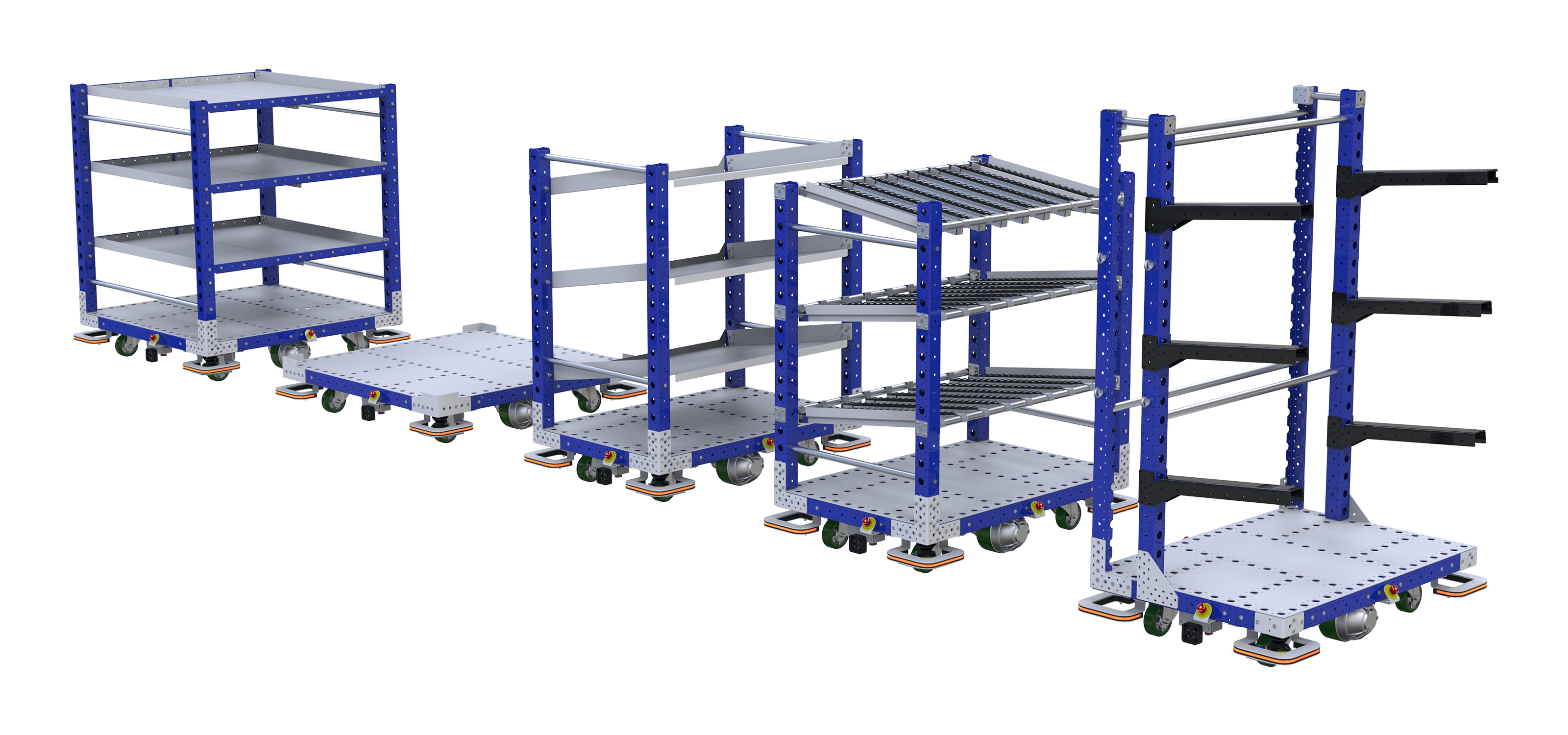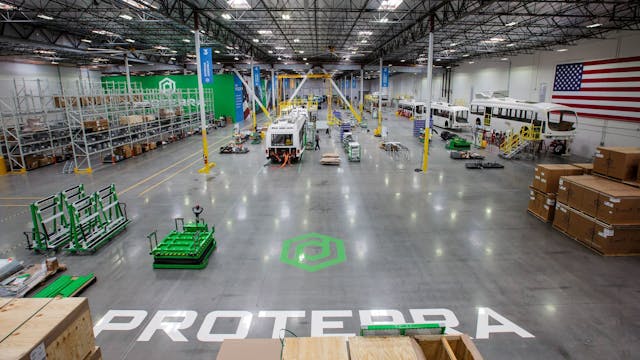What is the difference between the AGV System & an AMR?

As automation continues to become a growing need for small and large companies alike, the question turns away from if we need to automate, to how we should automate.
There are many factors that need to be taken into account when planning your journey into automation. Not every facility is alike in regards to budget, layout, load capacity, materials that need to be moved, human interaction, etc. At FlexQube, we have made the jump from manual material handling carts and added smart building blocks to go along with our concept. Two main sectors of automation have popped up, and these are AGVs (Automatic Guided Vehicles) and AMRs (Autonomous Mobile Robots).
In this previous blog post, you can read about what an AGV is, and below, we will explain what the main differences are between an AMR and our AGV.
What is an AMR?
AMR stands for Autonomous Mobile Robot, and what separates an AMR from other automated material handling products is that it navigates using natural navigation. Effectively natural navigation is a way for the robot to navigate “free” of any assistance, which means that it can navigate through your facility without the aid of any magnetic tape, wires, or other assistance. While there are many benefits to having natural navigation it can come with high costs, implementation time, and downtime if the route needs to be changed or an error occurs.
What is the AGV System?
The AGV System is an autonomous and remote-controlled material handling cart. By using smart building blocks and complementing digital modules such as motors, battery, control unit, and sensors, we can offer a flexible, affordable, and user-friendly concept. The AGV System has market-leading size flexibility from 910 x 840 mm up to 2510 x 2510 mm, as well as be used for stand-alone, towing, or in a mother-daughter configuration.
Want to stay up to date? Subscribe to our newsletter
So what are the differences between the AGV and an AMR?
Flexibility
The AGV is built using the same building blocks as FlexQube’s manual material handling carts. We have added a few automated building blocks, and this makes it the most versatile and flexible automated system on the market. It takes no longer than 2 minutes to remove a shelf top structure if you need to switch from totes and boxes to a pallet. No other automated solution can offer you this level of flexibility. You dictate the top structure you need based on the materials you are moving, and if they change, you can change.

Cost
As mentioned above, the cost of purchasing an AMR is considerable. It isn’t unusual to see prices for one robot coming in at over $70,000USD. Depending on where your facility is located in the world, it may be cheaper for you to skip this type of automation and continue using labor to transport your materials. However, the AGV is priced at $25,000USD, making it one of the most affordable automation solutions on the market. This makes it a much more reasonable business case to use the AGV, no matter where your location is located.
Robustness
The AGV is quite robust, with the standard flatbed taking loads of up to 2300lbs/1000kgs. Which makes it one of the most robust automated solutions on the market. The beams and the plates are made out of high-grade steel. Because of the ability to switch building blocks easily, it makes it very useful in case any part needs repairing.
Implementation
As stated above, the time to implementation of many AMRs is considerable. With it not only taking time but a significant amount of cost is involved as well. The cost of setting up wifi infrastructure and hiring consultants to come in and set up your most effective routes is sizeable and are all add-ons to the initial purchase cost. With the AGV, it is guided optically via a taped line. It is essential to point out that this taped line is not magnetic and only needs to develop a contrast for the AGV to follow. The implementation of this type of route is counted in hours and not in days, weeks, or months. Depending on the size of the route you are looking at implementing this can be completed, and you can have the AGV running on the same day of delivery. Included in this is the ability to set-up different stations using RFID tags. The AGV comes with the ability to map out the route through the tablet and you as the operator can mark out each station as needed.
Ease of Operation
Finally, since the beginning of development for the AGV we have focused on ensuring that the AGV is easy for everyone to use. This includes the people working on your facility floor as well, the operators. While AMRs are very advanced in how they navigate and how they can change their route when an obstacle is in the way, it also means they have a higher level complexity for day to day use. This is intimidating to not only the managers of the facility but even more so for the operators working on the floor. The AGV comes with a friendly and straight forward tablet that makes it very easy to alter routes, send it back to a station, make it turn 90 or 180 degrees, etc. This ease of use has saved customers many headaches already, and we are sure that this simplicity is a distinct advantage when beginning your journey into automation.
The AGVand AMRs both have their distinct strengths & weaknesses. AMRs are far more advanced in their navigation, which makes navigating obstacles a breeze, but can cause other issues in regards to implementation, cost, and ease of use. While the AGV doesn’t come with natural navigation, it has advantages in the actual price per unit, ease of implementation, and flexibility. It all comes down to what your needs and goals are with your automation process.


